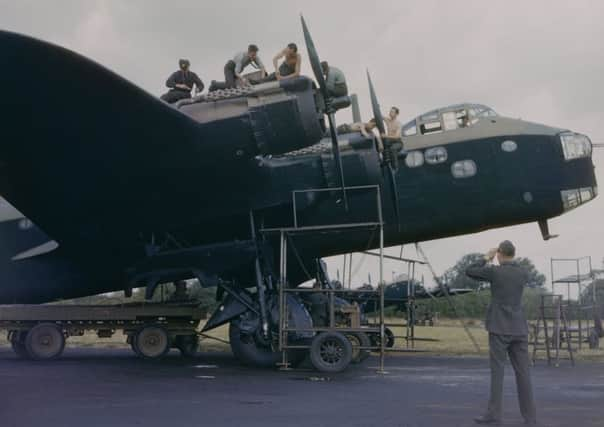Wreckage of Second World War bomber found in North Sea


National Grid engineers found the remains of the suspected RAF Short Stirling heavy bomber during a project to install a power cable between Britain and Norway below the seabed.
The wartime plane was used to carry supplies to Norwegian resistance fighters as they tried to expel Hitler’s forces between 1940 and 1945.
Advertisement
Hide AdThe Joint Casualty and Compassionate Centre at the Ministry of Defence was notified so it could investigate any links to missing British servicemen.
Expert Bengt Stangvik, who was consulted about the find, said the four-engine RAF aircraft struggled to exceed an altitude of 15,000 feet, making it a target for Luftwaffe fighters.
He said: “Several Stirlings disappeared without a trace on missions to Norway in winter 1944-45.
“Based on the location of this wreck, it is probable that it was on a mission to drop supplies to the resistance forces in western Norway.”
Nineteen of the 30 British aircraft that vanished during the Norwegian resistance were Short Stirlings, he added, of which six are unaccounted for.
The latest find was unearthed by sonar equipment being used by National Grid to scan the ocean floor.
Advertisement
Hide AdA camera was then sent down on a remote-controlled underwater vehicle to inspect it.
Nigel Williams, North Sea Link project director for National Grid, said: “When images of what appeared to be an aircraft wheel came through, you can imagine our surprise. It was only when experts investigated the images in more detail that we learnt there was a strong possibility it could be a British aircraft that served during the Second World War.
Advertisement
Hide Ad“Sadly, it appears the pilot and the crew of this particular aircraft were never able to complete their mission.”
The Joint Casualty and Compassionate Centre said the identity of the aircraft could not be confirmed until it had received positive evidence.
Under the Protection of Military Remains Act 1986, the site of the wreckage is protected and could become classed as a war grave, the centre’s spokeswoman Sue Raftree said.
During its use as a bomber, pilots praised the Short Stirling for its ability to out-turn enemy night fighters and for its favourable handling.